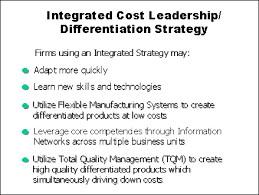-
Best Australian Pokies Best Payout
Play Free 777 Pokies Online
What Are the Best Australian Pokies to Win Big On
What Are the Best Online Pokies with Low Minimum Deposits for Real Money in Australia
New Australian Pokies Accepting PayID
What Are the Best Strategies to Win in Online Pokies with Bonus Rounds in Australia
Tips for Winning Top Australian Pokies
What Online Casinos Offer Free Play Pokies with Welcome Bonuses in Australia
Australian Slot Games
Payout Ratio Pokies with Welcome Bonus

How to use technology to achieve cost leadership and differentiation?
How to use technology to achieve cost leadership and differentiation?
Using Information Systems to Achieve Competitive Advantage
Firms with a competitive advantage over others typically have access to special resources that others do not or are able to use resources more efficiently, resulting in higher revenue growth, profitability, or productivity growth (efficiency), all of which ultimately in the long run translate into higher stock market valuations than their competitors.
Michael Porter’s competitive forces model describes five competitive forces that shape the fate of the firm.
- Traditional competitors: Existing firms that share a firm’s market space
- New market entrants: New companies have certain advantages, such as not being locked into old equipment and high motivation, as well as disadvantages, such as less expertise and little brand recognition. Some industries have lower barriers to entry, ie: cost less for a new company to enter the field.
- Substitute products and services: These are substitutes that your customers might use if your prices become too high. For example, Internet telephone service can substitute for traditional telephone service. The more substitute products and services in your industry, the less you can control pricing and raise your profit margins.
- Customers: The power of customers grows if they can easily switch to a competitor’s products and services, or if they can force a business and its competitors to compete on price alone in a transparent marketplace where there is little product differentiation and all prices are known instantly (such as on the Internet).
- Suppliers: The more different suppliers a firm has, the greater control it can exercise over suppliers in terms of price, quality, and delivery schedules.
Figure 3-10
 |
|
|
There are four generic strategies used to manage competitive forces, each of which often is enabled by using information technology and systems:
- Low-cost leadership: Use information systems to achieve the lowest operational costs and the lowest prices. For example, a supply chain management system can incorporate an efficient customer response system to directly link consumer behavior to distribution and production and supply chains, helping lower inventory and distribution costs.
- Product differentiation: Use information systems to enable new products and services, or greatly change the customer convenience in using your existing products and services. For instance, Land’s End uses mass customization, offering individually tailored products or services using the same production resources as mass production, to custom-tailor clothing to individual customer specifications.
- Focus on market niche: Use information systems to enable a specific market focus and serve this narrow target market better than competitors. Information systems support this strategy by producing and analyzing data for finely tuned sales and marketing techniques. Hilton Hotels uses a customer information system with detailed data about active guests to provide tailored services and reward profitable customers with extra privileges and attention.
- Strengthen customer and supplier intimacy: Use information systems to tighten linkages with suppliers and develop intimacy with customers. Chrysler Corporation uses information systems to facilitate direct access from suppliers to production schedules, and even permits suppliers to decide how and when to ship suppliers to Chrysler factories. This allows suppliers more lead time in producing goods. Strong linkages to customers and suppliers increase switching costs (the cost of switching from one product to a competing product) and loyalty to your firm.
The Internet has nearly destroyed some industries and has severely threatened more. The Internet has also created entirely new markets and formed the basis for thousands of new businesses.
Because of the Internet, the traditional competitive forces are still at work, but competitive rivalry has become much more intense. Internet technology is based on universal standards, making it easy for rivals to compete on price alone and for new competitors to enter the market. Because information is available to everyone, the Internet raises the bargaining power of customers, who can quickly find the lowest-cost provider on the Web. Some industries, such as the travel industry and the financial services industry, have been more impacted than others. However, the Internet also creates new opportunities for building brands and building very large and loyal customer bases, such as Yahoo!, eBay, and Google.
The value chain model highlights specific activities in the business where competitive strategies can best be applied and where information systems are most likely to have a strategic impact. The value chain model views the firm as a series or chain of basic activities that add a margin of value to a firm’s products or services. These activities can be categorized as either primary activities or support activities.
- Primary activities are most directly related to the production and distribution of the firm’s products and services, which create value for the customer. Primary activities include inbound logistics, operations, outbound logistics, sales and marketing, and service.
- Support activities make the delivery of the primary activities possible and consist of organization infrastructure (administration and management), human resources (employee recruiting, hiring, and training), technology (improving products and the production process), and procurement (purchasing input).
Attachments
